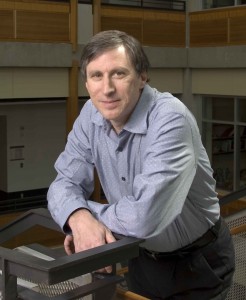 “When Hank Levy, chair of the UW Department of Computer Science & Engineering (CSE), walked into a room in early February, he expected to meet with the dean of engineering and the department executive committee for an emergency conference.
“When Hank Levy, chair of the UW Department of Computer Science & Engineering (CSE), walked into a room in early February, he expected to meet with the dean of engineering and the department executive committee for an emergency conference.
“Levy was instead greeted with a champagne celebration when CSE faculty surprised him with news that he had been elected to the National Academy of Engineering (NAE), which according to the organization’s website is the highest professional honor given to an engineer. …
“The press release from NAE said that Levy’s ‘contributions to design, implementation, and evaluation of operating systems, distributed systems, and processor architectures’ are the grounds for his election.”
Read the article here. Read more →
 The New York Times reports on research by UW CSE’s Yoshi Kohno, UCSD’s (and UW CSE Ph.D. alum) Stefan Savage, and their colleagues Steve Checkoway, Damon McCoy, Brian Kantor, Danny Anderson, Hovav Shacham, Karl Koscher, Alexei Czeskis, and Franziska Roesner, which was presented on Friday to the National Academy of Sciences’ Transportation Research Board.
The New York Times reports on research by UW CSE’s Yoshi Kohno, UCSD’s (and UW CSE Ph.D. alum) Stefan Savage, and their colleagues Steve Checkoway, Damon McCoy, Brian Kantor, Danny Anderson, Hovav Shacham, Karl Koscher, Alexei Czeskis, and Franziska Roesner, which was presented on Friday to the National Academy of Sciences’ Transportation Research Board.
“Because many of today’s cars contain cellular connections and Bluetooth wireless technology, it is possible for a hacker, working from a remote location, to take control of various features — like the car locks and brakes — as well as to track the vehicle’s location, eavesdrop on its cabin and steal vehicle data, the researchers said. They described a range of potential compromises of car security and safety.
“‘This report explores how hard it is to compromise a car’s computers without having any direct physical access to the car,’ said [UW CSE Ph.D. alumnus] Stefan Savage of the University of California, San Diego, who is one of the leaders of the research effort.”
Read the article in the Times here. Center for Automotive Embedded Systems Security here. An article in Technology Review is here. ComputerWorld covers this research here. Read more →
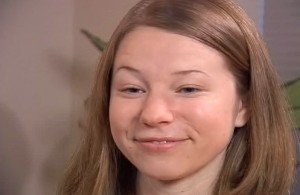 The Washington Post, in a series of articles on computer science enrollment, features UW CSE’s “Power to Change the World” video.
The Washington Post, in a series of articles on computer science enrollment, features UW CSE’s “Power to Change the World” video.
Read the article here. See all of CSE’s award-winning videos here. Read more →
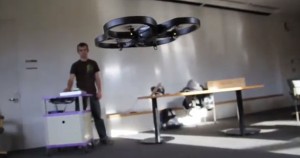 Xconomy covers professor Shwetak Patel’s EE 472 “Embedded Microcomputer Systems” course, in which student teams build controllers for the Parrot AR.Drone.
Xconomy covers professor Shwetak Patel’s EE 472 “Embedded Microcomputer Systems” course, in which student teams build controllers for the Parrot AR.Drone.
Read the article (and watch the video) here. Watch course videos here and here.
Seattle Times article here. And don’t miss Dancing with the Drones! GeekWire article here. Read more →
 The New York Times picks up on a point made in the recent report of the President’s Council of Advisors on Science and Technology assessing the Federal Networking and Information Technology R&D program: “performance gains in doing computing tasks that result from improvements in software algorithms often far outpace the gains attributable to faster processors.”
The New York Times picks up on a point made in the recent report of the President’s Council of Advisors on Science and Technology assessing the Federal Networking and Information Technology R&D program: “performance gains in doing computing tasks that result from improvements in software algorithms often far outpace the gains attributable to faster processors.”
UW CSE’s Ed Lazowska, co-chair of the PCAST NITRD Working Group, is quoted:
“The rate of change in hardware captured by Moore’s Law, experts agree, is an extraordinary achievement. ‘But the ingenuity that computer scientists have put into algorithms has yielded performance improvements that make even the exponential gains of Moore’s Law look trivial,’ said Edward Lazowska, a professor at the University of Washington.
“The rapid pace of software progress, Mr. Lazowska added, is harder to measure in algorithms performing nonnumerical tasks. But he points to the progress of recent years in artificial intelligence fields like language understanding, speech recognition and computer vision as evidence that the story of the algorithm’s ascent holds true well beyond more easily quantified benchmark tests.”
Read this really interesting article here. Followup post in Business Insider here. Read more →
 UW CSE professor Oren Etzioni is featured in a new video describing the UW Foster School of Business Business Plan Competition.
UW CSE professor Oren Etzioni is featured in a new video describing the UW Foster School of Business Business Plan Competition.
“‘What’s most impressive to me is the incredible creativity of the students… coming together to produce what’s both technically feasible and makes business sense,’ said Oren Etzioni, computer science and engineering professor and entrepreneur.”
Watch the video here. Read more →
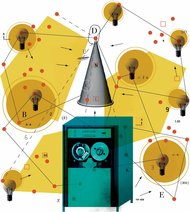 UW CSE’s Oren Etzioni is quoted in this New York Times article:
UW CSE’s Oren Etzioni is quoted in this New York Times article:
“But parsing and categorizing language, with its ambiguity and subtlety, remains a formidable hurdle for computers. So the challenge facing Watson was far greater than the one I.B.M. overcame in 1997 with its Deep Blue chess-playing computer, which beat the world champion Garry Kasparov.
“‘It’s a lot more difficult for a computer to understand language at the level of an 8-year-old than to beat a grandmaster at chess,’ observed Oren Etzioni, a computer scientist at the University of Washington in Seattle.”
Read the article here. Read more →
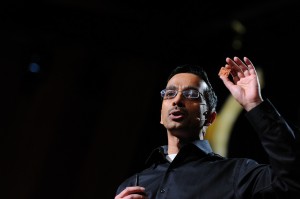 UW CSE professor Raj Rao was one of the headliners at the TED2011 conference, speaking in Session 11, “The Echo of Time,” along with paleontologist Jack Horner, President of the Institute of Medicine Harvey Fineberg, and General Stanley McChrystal. More photos here. Raj the cartoon here. Read more →
UW CSE professor Raj Rao was one of the headliners at the TED2011 conference, speaking in Session 11, “The Echo of Time,” along with paleontologist Jack Horner, President of the Institute of Medicine Harvey Fineberg, and General Stanley McChrystal. More photos here. Raj the cartoon here. Read more →
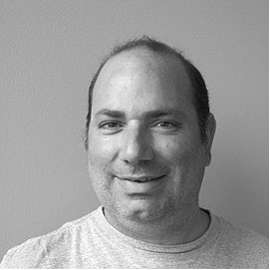 The CHI Academy is an honorary group of individuals who have made extensive contributions to the study of Human Computer Interaction and who have led the shaping of the field.
The CHI Academy is an honorary group of individuals who have made extensive contributions to the study of Human Computer Interaction and who have led the shaping of the field.
This year seven new members were elected to the CHI Academy, including UW CSE’s James Landay. James’s citation reads:
“James Landay is the Short-Dooley Professor of Computer Science & Engineering at the University of Washington. His research over the past two decades has included contributions in the areas of automated usability evaluation, demonstrational interfaces, ubiquitous computing, user interface design tools, and web design. As a graduate student at Carnegie Mellon University, he began creating tools to support fluid user interface design and development through sketching. From 1997-2003, he was a professor at UC Berkeley, where he was tenured after creating a strong HCI research community and continuing to develop tools for non-programmers that explored the then-novel design spaces of web site, pen and speech interaction. He moved to Seattle in 2003 to join the faculty in CSE at UW and to direct the Intel Research Seattle lablet, which focused under his leadership on technologies and applications of ubiquitous computing. He has continued his leadership in developing tools for designers, adding to his long list of publicly available design tools through the investigation of location-aware computing, activity-based computing and ubicomp in the home. He was a founding member of the cross-university DUB Group at UW, which under his leadership has quickly become an international power in HCI research. He is currently helping to establish an HCI research center at Microsoft Research Beijing. He has also had success in commercialization efforts. His research contributions and those of his current and former students are alone worthy of election into the CHI Academy. But James’ most lasting legacy will be his outstanding ability to create communities of HCI researchers (Berkeley, Intel Research Seattle, Washington) with international prominence and lasting impact.
Congratulations James! Learn more about his research here. Learn about UW’s cross-campus DUB research group here. Read the CHI Academy citation here.
Read more →
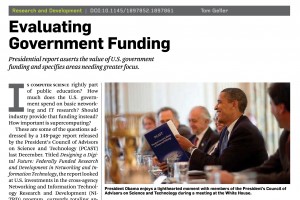 Communications of the ACM reports on the report of the Presidents Council of Advisors on Science and Technology concerning the Federal Networking and Information Technology Research and Development Program. (UW CSE’s Ed Lazowska co-chaired the Working Group that advised PCAST on the report.)
Communications of the ACM reports on the report of the Presidents Council of Advisors on Science and Technology concerning the Federal Networking and Information Technology Research and Development Program. (UW CSE’s Ed Lazowska co-chaired the Working Group that advised PCAST on the report.)
“An example of high payback was given at the report’s public release by Akamai founder Tom Leighton. He related a story of Defense Advanced Research Projects Agency funding he received in the 1990s to study ‘highly mathematical and highly theoretical subjects … the living example of high-risk research.’ When the research was finished, Internet companies weren’t interested in the results – even for free.
“‘So we started a company called Akamai Technologies,’ Leighton says. ‘We [now] carry over a third of Web traffic … and are probably paying over $100 million in taxes this year. But it wasn’t the kind of research that companies fund.'”
Read the article here. Read more →
 “When Hank Levy, chair of the UW Department of Computer Science & Engineering (CSE), walked into a room in early February, he expected to meet with the dean of engineering and the department executive committee for an emergency conference.
“When Hank Levy, chair of the UW Department of Computer Science & Engineering (CSE), walked into a room in early February, he expected to meet with the dean of engineering and the department executive committee for an emergency conference.









